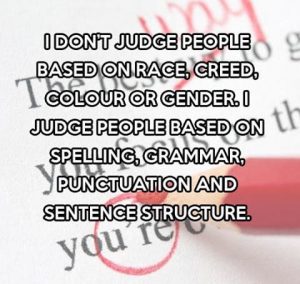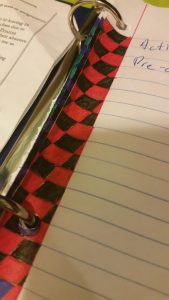CN: Very mild mentions of ableism, trans erasure, alcohol.
I attended Freethought Festival in Madison Wisconsin this past weekend. This was the 5th time the students at University of Wisconsin have hosted this event, and I have attended all of them largely because it’s free and in my home town. Three Orbit bloggers, Heina, Greta, and Alix, have spoken at this event over the years.
Freethought Festival (FTF) is definitely a mainstream Atheist event. The keynote speaker this year was James Randi, though I missed his talk because I needed to leave town. Despite being a student-run event, the audience isn’t very diverse, with a high percentage of older white men. The speakers were 69% male, 85% white this year, though this has varied in years past with a more gender balanced group of speakers in 2015 and 2013. It does not put itself forward as a social justice event, but has featured talks with distinctly justice oriented themes, such as Alix’s talk on diversity in the atheist community in 2012 and Desiree Schell’s talk on the links between unions and freethought in 2013.
In the 5 years I have attended FTF I have not attended every talk or every social event, but I have attended some portion of all 5 events. I have seen some really fascinating talks, and a few boring ones. I have heard some things I disagreed with from the stage, but that is to be expected, and nothing really stands out to me as shockingly offensive in my memory.
The event is FREE! This is a major bonus for those, like me, who have little funds to attend atheist conventions. If you can get there, you can attend. The event itself is free, and located in an area with reasonably inexpensive food, including grocery stores and fast food nearby (there are great restaurants too). Those who live in Madison can get there easily, but those from outside the area may struggle to find highly affordable accommodations in the downtown area. There is a hostel in the area though, which may be the cheapest option for visitors. It’s a short bus or medium length walk from campus.
The spaces used by this event have been increasingly attractive and comfortable over the past few years. It began in a lecture hall in the old uncomfortable Humanities Building, and has moved to more and more comfortable spaces over time. The most recent space was a big ballroom in a brand new building, with neat textured wood walls and a generally clean and well-made feel. It definitely feels different than the old lecture hall and the audio-visual tech has improved dramatically over the years.
FTF has a harassment policy on their website, which is easily found on the “Event Information” page. The policy is a pretty standard boilerplate policy, without any glaring problems. In my experience the wording of a harassment policy isn’t as important as how it is enforced, and I am not aware of any problems with enforcement at this particular event. In fact, since I am not involved in the running of this event, I’m unaware of any reported incidents of harassment so it is possible that there have not been any reasons for enforcement at this time. I did NOT see any paperwork on the harassment policy at the event itself, including on the registration desk, but I didn’t go looking for it either. One way this event could improve is by making the policy (or a short version of it) visible at the event itself.
The website and physical location had absolutely no recognition that I could find of the existence of disabled attendees. While the building it was held in this year and the past few years have complied with ADA requirements (unlike the first year), there was no seating set aside for people using mobility devices, no ASL interpretation or transcription, no discussion of accessibility issues on the website or paperwork at registration. This is a major area that FTF could improve. It is incredibly inexpensive to include accessibility information on the website and to set aside reserved mobility seating at the event. While including interpreters and similar accommodations can be expensive, I think it’s worth it to make an event accessible to more attendees.
From a neuroaccessibility perspective I didn’t find this event to be as comfortable as I found Skepticon this past year. That event actively works to recognize that their attendees have varied physical needs and have been at the forefront of accessible events even while still charging nothing to attend. At FTF I brought my own fidgets and found that the volume was very comfortable for me (maybe too quiet for others) but it didn’t feel like a space that was actively trying to be inclusive of everyone.
The building FTF was held in this year, as well as the one with the social events, did not have a gender neutral bathroom, or at least not one that was easy to find. If there is one available, this should be indicated to attendees with signs or something similar. The absence of neutral bathrooms, and no commentary about it, indicates that the event organizers may be unaware that this is an important issue. Gender non-binary attendees and trans attendees who desire neutral bathrooms should have a safe place to use, and if none is available the event should work to remedy this situation and acknowledge the problem publicly.
The social events for FTF are a major area in which they could improve. People are encouraged to socialize at the Union South, a student union several blocks walk from the main event. The Union itself is pretty cool, but the rooms these events have been in for the past 2 years are frankly boring and uncomfortable. This year there was definitely not enough space for the number of people who wanted to socialize due to the building code restrictions, which meant people spilled out into the halls. The social culture revolves around beer and talking very loudly in rooms that echo. Not great. Even worse, you have to go down a flight of stairs and across the lower level into a SUPER loud bar area to order beer or appetizers, then bring them back up to the socializing area. I’m sure alternatives must exist for this set-up, perhaps in any one of the many near-campus restaurants or coffee shops nearby. In fact, an alcohol-free social event in a nearby coffee shop would be ideal. I like drinking, but this is a student run event that should include the underage students they want to reach, and the social events should reflect that.
I’m going to keep attending Freethought Festival in future years, because they continue to bring in speakers I am interested in seeing and it’s easy for me to go to a free event in my home town. I’d love to see the improvements in accessibility and social events that could lead to this being a much more accepting and fun event to attend.



